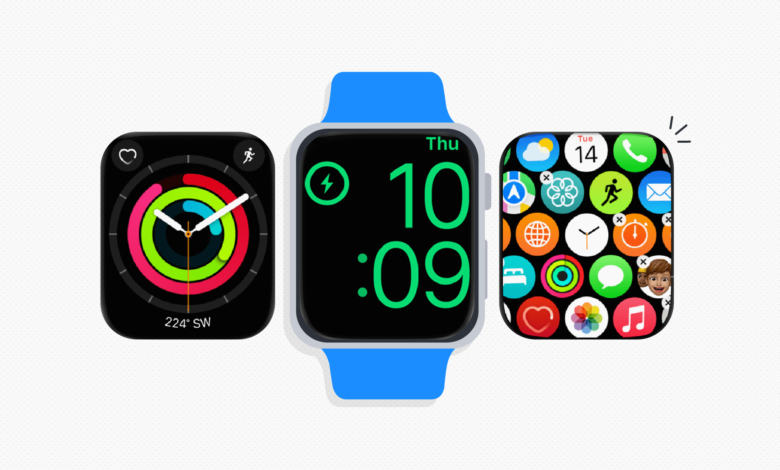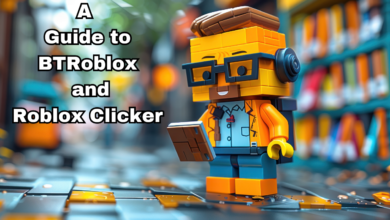The Future of Wearable Tech: How a UI/UX Design Company Can Lead the Way

Wearable technology has rapidly transformed from a niche market to a mainstream phenomenon, influencing various sectors, including healthcare, fitness, entertainment, and daily life. As the demand for innovative wearable devices continues to rise, the role of a UI/UX design company becomes crucial in ensuring these devices not only function effectively but also deliver a seamless user experience. In this article, we will explore the future of wearable tech and how a UI/UX design company can spearhead its advancement.
Understanding Wearable Technology
Wearable technology refers to electronic devices that can be worn on the body, often equipped with sensors and software to track various health metrics or enhance user experiences. Common examples include smartwatches, fitness trackers, augmented reality glasses, and smart clothing. These devices have the potential to collect real-time data, making them invaluable in numerous applications, from health monitoring to navigation.
The Growing Importance of Wearable Tech
As technology continues to evolve, the integration of wearable devices into daily life has become increasingly prominent. The global wearable technology market is projected to reach billions of dollars in the coming years, driven by advancements in sensor technology, artificial intelligence, and the Internet of Things (IoT). This growth presents unique opportunities for businesses, particularly for a software development company that specializes in creating applications and solutions for wearables.
The Role of UI/UX Design in Wearable Tech
Creating Intuitive Interfaces
The success of wearable technology hinges on user adoption, which is significantly influenced by the device’s interface. A UI/UX design company plays a vital role in crafting intuitive interfaces that enhance usability. Wearable devices have limited screen space and require designers to prioritize information and functionality carefully.
Key Considerations for Designing Wearable Interfaces
- Simplicity: The interface must be straightforward and easy to navigate, allowing users to access essential features without frustration.
- Accessibility: Designers should consider users of varying abilities, ensuring that interfaces are usable for everyone.
- Context Awareness: Wearable devices often function in dynamic environments. The interface should adapt to the user’s context, providing relevant information when needed.
Enhancing User Experience
A superior user experience is crucial for ensuring user retention and satisfaction. A UI/UX design company can employ various strategies to enhance the experience of wearable tech users.
Personalization
Personalization is a key trend in wearable technology. By leveraging user data, designers can create tailored experiences that resonate with individual preferences and habits. For instance, a fitness tracker might adapt its coaching style based on a user’s historical performance data.
Feedback Mechanisms
Incorporating feedback mechanisms, such as haptic feedback or audio cues, can significantly enhance the user experience. These features provide users with immediate responses, reinforcing their interactions with the device and making the experience feel more engaging.
Future Trends in Wearable Tech
Health Monitoring and Wellness
The health and wellness sector has seen substantial growth in wearable technology. Devices that monitor vital signs, track physical activity, and even detect early signs of health issues are becoming commonplace.
The Role of a UI/UX Design Company
A UI/UX design company can facilitate this trend by creating user-friendly applications that interpret health data in meaningful ways. By providing clear visualizations and actionable insights, these applications can empower users to make informed health decisions.
Integration with Smart Home Ecosystems
As smart homes become increasingly popular, wearable devices will likely integrate with home automation systems. Imagine a smartwatch that can control your smart thermostat or lighting based on your location or preferences.
The Importance of Seamless Interaction
Creating a seamless interaction between wearables and smart home devices is crucial. A software development company can work in tandem with a UI/UX design company to ensure that these integrations are intuitive and user-friendly, fostering a cohesive user experience across devices.
Augmented Reality (AR) Wearables
Augmented reality wearables, such as smart glasses, are poised to revolutionize how users interact with their environment. By overlaying digital information onto the real world, AR wearables can provide context-aware experiences that enhance learning, gaming, and productivity.
Designing for AR Experiences
Designing for augmented reality presents unique challenges. A UI/UX design company must consider how users will interact with digital overlays in real-world contexts. This includes spatial awareness, user gestures, and how information is presented without overwhelming the user.
Challenges in Wearable Tech Development
Technical Limitations
Despite the potential of wearable technology, developers face various technical challenges, including battery life, processing power, and sensor accuracy. A software development company can address these challenges by creating efficient algorithms and leveraging advancements in hardware.
User Privacy and Data Security
As wearable devices collect vast amounts of personal data, concerns about user privacy and data security are paramount. A UI/UX design company must prioritize transparency and trust in the design process.
Implementing Robust Security Features
Incorporating robust security features, such as biometric authentication and encrypted data transmission, can reassure users about the safety of their information. Clear communication about how data is used and stored is also essential for building user trust.
The Collaborative Role of UI/UX Design and Software Development Companies
A Unified Approach to Development
For wearable technology to succeed, there must be a strong collaboration between UI/UX design companies and software development companies. This unified approach ensures that the user experience is at the forefront of the development process, leading to products that not only function effectively but also resonate with users.
Iterative Design and Development
The iterative design process allows for continuous improvement based on user feedback. By involving users in testing and gathering insights throughout the development cycle, both design and development teams can make informed decisions that enhance the final product.
Fostering Innovation
Innovation is the driving force behind the future of wearable tech. A collaborative environment between design and development teams encourages creativity and experimentation. Together, they can explore new ideas and technologies that push the boundaries of what wearables can achieve.
Conclusion
The future of wearable technology is bright, with endless possibilities for innovation and improvement. A UI/UX design company has a crucial role to play in shaping this future, ensuring that wearable devices are not only functional but also provide an exceptional user experience. By prioritizing user-centered design, personalization, and seamless integration with other technologies, these companies can lead the way in creating wearable solutions that empower and enrich lives.
As we look ahead, collaboration between software development company and UI/UX design companies will be essential in overcoming challenges and unlocking the full potential of wearable technology. By embracing new trends and prioritizing user experience, these companies can drive the wearable tech industry forward, creating products that enhance our daily lives and well-being.





